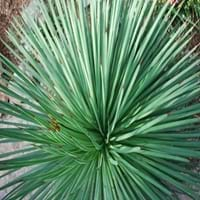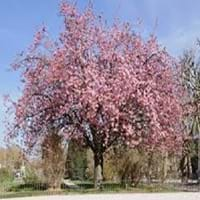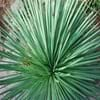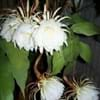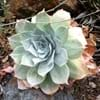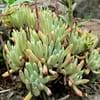Life Span
Perennial
Perennial
Type
Cactus or Succulent, Perennial
Tree
Origin
Southwestern United States, Mexico
China, Japan, Korea
Types
Not Available
Amanogawa , Shirotae , Shogetsu
Number of Varieties
Not Available
Habitat
Desert, Dry areas, Semi desert
Woodlands
USDA Hardiness Zone
12-15
6-8
Sunset Zone
10, 11, 12, 13, 14, 15, 16, 17, 18, 19, 20, 21, 22, 23, 24
2b, 3a, 3b, 4, 5, 6, 7, 12, 14, 15, 16, 17, 18, 19, 20
Habit
Rosette/Stemless
Arching/Fountain-shaped
Flower Color Modifier
Not Available
Bicolor
Fruit Color
Non Fruiting Plant
Not Available
Leaf Color in Spring
Green, Blue Green
Green, Plum
Leaf Color in Summer
Green, Blue Green
Green
Leaf Color in Fall
Green, Blue Green
Gold, Orange Red
Leaf Color in Winter
Green, Blue Green
Not Available
Leaf Shape
Long Linear
Pinnate
Plant Season
Spring, Summer, Fall, Winter
Spring, Fall
Sunlight
Full Sun
Full Sun, Partial Sun
Type of Soil
Loam, Sand
Clay, Loam, Sand
The pH of Soil
Neutral, Alkaline
Acidic, Neutral
Soil Drainage
Well drained
Well drained
Bloom Time
Spring
Early Spring
Tolerances
Drought
Not Available
Where to Plant?
Container, Ground, Pot
Ground
How to Plant?
Leaf Cutting, Stem Planting, Transplanting
Grafting, Stem Cutting
Plant Maintenance
Medium
High
Watering Requirements
Average Water Needs
Keep the ground moist but not water-logged
In Summer
Lots of watering
Lots of watering
In Spring
Moderate
Moderate
In Winter
Average Water
Average Water
Soil pH
Neutral, Alkaline
Acidic, Neutral
Soil Type
Loam, Sand
Clay, Loam, Sand
Soil Drainage Capacity
Well drained
Well drained
Sun Exposure
Full Sun
Full Sun, Partial Sun
Pruning
Remove damaged leaves, Remove dead branches, Remove dead leaves
prune to control shape, Remove damaged leaves, Remove dead branches, Remove dead leaves
Fertilizers
No fertilizers needed
All-Purpose Liquid Fertilizer, slow-release fertilizers
Pests and Diseases
Insects, Red blotch
Aphids, Bacterial leaf spot, Borers, Caterpillars, Scale insects, Spider mites
Plant Tolerance
Drought
Drought
Flower Petal Number
Single
Double
Fragrant Bark/Stem
Not Available
No
Foliage Texture
Bold
Medium
Foliage Sheen
Matte
Glossy
Attracts
Not Available
Aphids, Birds, Not Available
Allergy
Skin rash
Unknown
Aesthetic Uses
Beautification, Landscape Designing, Showy Purposes
along a porch, deck or patio, Beautification, Cottage Garden, Wild gardens
Beauty Benefits
Not Available
Not Available
Environmental Uses
Air purification
Air purification
Medicinal Uses
Nutrients
anti viral, Anti-oxidant
Part of Plant Used
Leaves
Bark
Other Uses
Decoration Purposes, Showy Purposes, Used As Food
Grown for shade, Traditional medicine, Used for fragrance
Used As Indoor Plant
Yes
No
Used As Outdoor Plant
Yes
Yes
Garden Design
Container, Dried Flower, Everlasting, Feature Plant, Rock Garden, Wall, Wildflower
Feature Plant, Shade Trees, Street Trees
Botanical Name
DASYLIRION
PRUNUS serrulata 'Kwanzan'
Common Name
Spoon flower, Common sotol
Kwanzan Cherry
In Hindi
डेजर्ट चम्मच
Kwanzan Cherry
In German
Esslöffel
Kwanzan Cherry
In French
Desert cuillère
Kwanzan Cherry
In Spanish
Desierto cuchara
Kwanzan Cherry
In Greek
Desert κουτάλι
Kwanzan Cherry
In Portuguese
colher Desert
Árvore de cereja
In Polish
Desert łyżka
Wiśnia drzewa
In Latin
cochleari deserto
Kwanzan Cherry
Phylum
Magnoliophyta
Angiosperms
Class
Liliopsida
Magnoliopsida
Order
Asparagales
Rosales
Family
Agavaceae
Rosaceae
Clade
Angiosperms, Monocots
Eudicots
Tribe
Not Available
Not Available
Subfamily
Nolinoideae
Not Available
Number of Species
Not Available
Importance of Desert Spoon and Kwanzan Cherry
Want to have the most appropriate plant for your garden? You might want to know the importance of Desert Spoon and Kwanzan Cherry. Basically, these two plants vary in many aspects. Compare Desert Spoon and Kwanzan Cherry as they differ in many characteristics such as their life, care, benefits, facts, etc. Every gardener must at least have the slightest clue about the plants he wants to plant in his garden. Compare their benefits, which differ in many ways like facts and uses. The medicinal use of Desert Spoon is Nutrients whereas of Kwanzan Cherry is anti viral and Anti-oxidant. Desert Spoon has beauty benefits as follows: Not Available while Kwanzan Cherry has beauty benefits as follows: Not Available.
Compare Facts of Desert Spoon vs Kwanzan Cherry
How to choose the best garden plant for your garden depending upon its facts? Here garden plant comparison will help you to solve this query. Compare the facts of Desert Spoon vs Kwanzan Cherry and know which one to choose. As garden plants have benefits and other uses, allergy is also a major drawback of plants for some people. Allergic reactions of Desert Spoon are Skin rash whereas of Kwanzan Cherry have Unknown respectively. Having a fruit bearing plant in your garden can be a plus point of your garden. Desert Spoon has no showy fruits and Kwanzan Cherry has no showy fruits. Also Desert Spoon is not flowering and Kwanzan Cherry is not flowering . You can compare Desert Spoon and Kwanzan Cherry facts and facts of other plants too.
